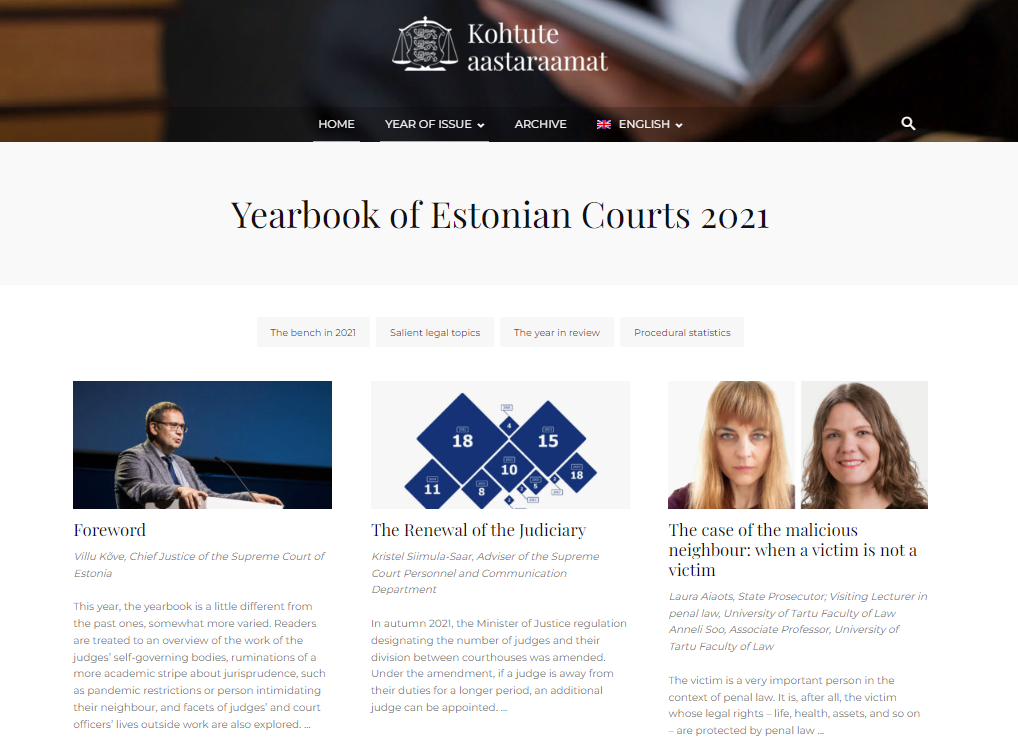 Riigikohus on Eesti Vabariigi kõrgeim kohus.
Riigikohus on Eesti Vabariigi kõrgeim kohus.
Põhiseaduse kohaselt on Riigikohus kassatsioonikohus ja
põhiseaduslikkuse järelevalve kohus. Riigikohtu pädevus
on sätestatud kohtute seaduses. 
Primary tabs
An overview of the current state and future directions of the Estonian courts
The recently published yearbook of the Estonian courts provides the reader with a selection of articles on salient legal topics, analysis on the organization and problems of judicial training, a graphic overview of the gender and age-related distribution of the judiciary and statistics on the work of the court system.
A comprehensive overview of the training of Estonian judges was published in the yearbook, examining both its current situation and fields that require further development. Examples of topics include the process of preparing novice judges for the bench, improving the rotation possibilities for judges, along with training of court officers and judicial clerks and the need to work more closely with the Bar Association and Prosecutor’s Office when it comes to carrying out training.
Three longer articles treat topics that have recently led to discussion among professionals in the Estonian legal system: the adjudication of pandemic restriction appeals, which tested administrative courts; a Supreme Court decision pertaining to legitimate self-defence; and problems related to identifying people behind defamatory online comments.
After the publication of the yearbook, the Civil Chamber of the Supreme Court issued a ruling upholding the current practice used by Estonian courts, which is that pre-trial taking of evidence is initiated in order to identify the originator of the online post, where the personal data necessary for filing an action are subpoenaed from the website proprietor or communication undertaking. In the opinion of the Supreme Court, both valid Estonian law and the EU General Data Protection Regulation provide sufficient grounds for this approach.
The yearbook also provides a graphic overview of the Estonian judges, describing their gender and age distribution and the generational change caused by a large number of judges reaching retirement age at the same time. As usual, the yearbook also includes summaries of procedural statistics that characterize the work of the judges during the last year.
The yearbook of the courts is available electronically and can be read online here.


